Front Matter
Preface
Table of Contents
1. Antennas
1.1 Introduction
1.2 Types of Antennas
1.2.1 Wire Antennas
1.2.2 Aperture Antennas
1.2.3 Microstrip Antennas
1.2.4 Array Antennas
1.2.5 Reflector Antennas
1.2.6 Lens Antennas
1.3 Radiation Mechanism
1.3.1 Single Wire
1.3.2 Two-Wires
1.3.3 Dipole
1.3.4 Computer Animation-Visualization of Radiation Problems
1.4 Current Distribution on a Thin Wire Antenna
1.5 Historical Advancement
1.5.1 Antenna Elements
1.5.2 Methods of Analysis
1.5.3 Some Future Challenges
1.6 Multimedia
References
2. Fundamental Parameters of Antennas
2.1 Introduction
2.2 Radiation Pattern
2.2.1 Radiation Pattern Lobes
2.2.2 Isotropic, Directional, and Omnidirectional Patterns
2.2.3 Principal Patterns
2.2.4 Field Regions
2.2.5 Radian and Steradian
2.3 Radiation Power Density
2.4 Radiation Intensity
2.5 Beamwidth
2.6 Directivity
2.6.1 Directional Patterns
2.6.2 Omnidirectional Patterns
2.7 Numerical Techniques
2.8 Antenna Efficiency
2.9 Gain
2.10 Beam Efficiency
2.11 Bandwidth
2.12 Polarization
2.12.1 Linear, Circular, and Elliptical Polarizations
2.12.2 Polarization Loss Factor and Efficiency
2.13 Input Impedance
2.14 Antenna Radiation Efficiency
2.15 Antenna Vector Effective Length and Equivalent Areas
2.15.1 Vector Effective Length
2.15.2 Antenna Equivalent Areas
2.16 Maximum Directivity and Maximum Effective Area
2.17 Friis Transmission Equation and Radar Range Equation
2.17.1 Friis Transmission Equation
2.17.2 Radar Range Equation
2.17.3 Antenna Radar Cross Section
2.18 Antenna Temperature
2.19 Multimedia
References
Problems
3. Radiation Integrals and Auxiliary Potential Functions
3.1 Introduction
3.2 The Vector Potential A for an Electric Current Source J
3.3 The Vector Potential F for a Magnetic Current Source M
3.4 Electric and Magnetic Fields for Electric (J) and Magnetic (M) Current Sources
3.5 Solution of the Inhomogeneous Vector Potential Wave Equation
3.6 Far-Field Radiation
3.7 Duality Theorem
3.8 Reciprocity and Reaction Theorems
3.8.1 Reciprocity for Two Antennas
3.8.2 Reciprocity for Antenna Radiation Patterns
References
Problems
4. Linear Wire Antennas
4.1 Introduction
4.2 Infinitesimal Dipole
4.2.1 Radiated Fields
4.2.2 Power Density and Radiation Resistance
4.2.3 Radian Distance and Radian Sphere
4.2.4 Near-Field (kr << 1) Region
4.2.5 Intermediate-Field (kr > 1) Region
4.2.6 Far-Field (kr >> 1) Region
4.2.7 Directivity
4.3 Small Dipole
4.4 Region Separation
4.4.1 Far-Field (Fraunhofer) Region
4.4.2 Radiating Near-Field (Fresnel) Region
4.4.3 Reactive Near-Field Region
4.5 Finite Length Dipole
4.5.1 Current Distribution
4.5.2 Radiated Fields: Element Factor, Space Factor, and Pattern Multiplication
4.5.3 Power Density, Radiation Intensity, and Radiation Resistance
4.5.4 Directivity
4.5.5 Input Resistance
4.5.6 Finite Feed Gap
4.6 Half-Wavelength Dipole
4.7 Linear Elements near or on Infinite Perfect Conductors
4.7.1 Image Theory
4.7.2 Vertical Electric Dipole
4.7.3 Approximate Formulas for Rapid Calculations and Design
4.7.4 Antennas for Mobile Communication Systems
4.7.5 Horizontal Electric Dipole
4.8 Ground Effects
4.8.1 Vertical Electric Dipole
4.8.2 Horizontal Electric Dipole
4.8.3 Earth Curvature
4.9 Computer Codes
4.10 Multimedia
References
Problems
5. Loop Antennas
5.1 Introduction
5.2 Small Circular Loop
5.2.1 Radiated Fields
5.2.2 Small Loop and Infinitesimal Magnetic Dipole
5.2.3 Power Density and Radiation Resistance
5.2.4 Near-Field (kr << 1) Region
5.2.5 Far-Field (kr >> 1) Region
5.2.6 Radiation Intensity and Directivity
5.2.7 Equivalent Circuit
5.3 Circular Loop of Constant Current
5.3.1 Radiated Fields
5.3.2 Power Density, Radiation Intensity, Radiation Resistance, and Directivity
5.4 Circular Loop with Nonuniform Current
5.4.1 Arrays
5.4.2 Design Procedure
5.5 Ground and Earth Curvature Effects for Circular Loops
5.6 Polygonal Loop Antennas
5.6.1 Square Loop
5.6.2 Triangular, Rectangular, and Rhombic Loops
5.7 Ferrite Loop
5.7.1 Radiation Resistance
5.7.2 Ferrite-Loaded Receiving Loop
5.8 Mobile Communication Systems Applications
5.9 Multimedia
References
Problems
6. Arrays: Linear, Planar, and Circular
6.1 Introduction
6.2 Two-Element Array
6.3 N-Element Linear Array: Uniform Amplitude and Spacing
6.3.1 Broadside Array
6.3.2 Ordinary End-Fire Array
6.3.3 Phased (Scanning) Array
6.3.4 Hansen-Woodyard End-Fire Array
6.4 N-Element Linear Array: Directivity
6.4.1 Broadside Array
6.4.2 Ordinary End-Fire Array
6.4.3 Hansen-Woodyard End-Fire Array
6.5 Design Procedure
6.6 N-Element Linear Array: Three-Dimensional Characteristics
6.6.1 N-Elements along Z-Axis
6.6.2 N-Elements along X- or Y-Axis
6.7 Rectangular-to-Polar Graphical Solution
6.8 N-Element Linear Array: Uniform Spacing, Nonuniform Amplitude
6.8.1 Array Factor
6.8.2 Binomial Array
6.8.3 Dolph-Tschebyscheff Array
6.9 Superdirectivity
6.9.1 Efficiency and Directivity
6.9.2 Designs with Constraints
6.10 Planar Array
6.10.1 Array Factor
6.10.2 Beamwidth
6.10.3 Directivity
6.11 Design Considerations
6.12 Circular Array
6.12.1 Array Factor
6.13 Multimedia
References
Problems
7. Antenna Synthesis and Continuous Sources
7.1 Introduction
7.2 Continuous Sources
7.2.1 Line-Source
7.2.2 Discretization of Continuous Sources
7.3 Schelkunoff Polynomial Method
7.4 Fourier Transform Method
7.4.1 Line-Source
7.4.2 Linear Array
7.5 Woodward-Lawson Method
7.5.1 Line-Source
7.5.2 Linear Array
7.6 Taylor Line-Source (Tschebyscheff-Error)
7.6.1 Design Procedure
7.7 Taylor Line-Source (One-Parameter)
7.8 Triangular, Cosine, and Cosine-Squared Amplitude Distributions
7.9 Line-Source Phase Distributions
7.10 Continuous Aperture Sources
7.10.1 Rectangular Aperture
7.10.2 Circular Aperture
7.11 Multimedia
References
Problems
8. Integral Equations, Moment Method, and Self and Mutual Impedances
8.1 Introduction
8.2 Integral Equation Method
8.2.1 Electrostatic Charge Distribution
8.2.2 Integral Equation
8.3 Finite Diameter Wires
8.3.1 Pocklington's Integral Equation
8.3.2 Hallén's Integral Equation
8.3.3 Source Modeling
8.4 Moment Method Solution
8.4.1 Basis Functions
8.4.2 Weighting (Testing) Functions
8.5 Self-Impedance
8.5.1 Integral Equation-Moment Method
8.5.2 Induced EMF Method
8.6 Mutual Impedance between Linear Elements
8.6.1 Integral Equation-Moment Method
8.6.2 Induced EMF Method
8.7 Mutual Coupling in Arrays
8.7.1 Coupling in the Transmitting Mode
8.7.2 Coupling in the Receiving Mode
8.7.3 Mutual Coupling on Array Performance
8.7.4 Coupling in an Infinite Regular Array
8.7.5 Grating Lobes Considerations
8.8 Multimedia
References
Problems
9. Broadband Dipoles and Matching Techniques
9.1 Introduction
9.2 Biconical Antenna
9.2.1 Radiated Fields
9.2.2 Input Impedance
9.3 Triangular Sheet, Bow-Tie, and Wire Simulation
9.4 Cylindrical Dipole
9.4.1 Bandwidth
9.4.2 Input Impedance
9.4.3 Resonance and Ground Plane Simulation
9.4.4 Radiation Patterns
9.4.5 Equivalent Radii
9.4.6 Dielectric Coating
9.5 Folded Dipole
9.6 Discone and Conical Skirt Monopole
9.7 Matching Techniques
9.7.1 Stub-Matching
9.7.2 Quarter-Wavelength Transformer
9.7.3 T-Match
9.7.4 Gamma Match
9.7.5 Omega Match
9.7.6 Baluns and Transformers
9.8 Multimedia
References
Problems
10. Traveling Wave and Broadband Antennas
10.1 Introduction
10.2 Traveling Wave Antennas
10.2.1 Long Wire
10.2.2 V Antenna
10.2.3 Rhombic Antenna
10.3 Broadband Antennas
10.3.1 Helical Antenna
10.3.2 Electric-Magnetic Dipole
10.3.3 Yagi-Uda Array of Linear Elements
10.3.4 Yagi-Uda Array of Loops
10.4 Multimedia
References
Problems
11. Frequency Independent Antennas, Antenna Miniaturization, and Fractal Antennas
11.1 Introduction
11.2 Theory
11.3 Equiangular Spiral Antennas
11.3.1 Planar Spiral
11.3.2 Conical Spiral
11.4 Log-Periodic Antennas
11.4.1 Planar and Wire Surfaces
11.4.2 Dipole Array
11.4.3 Design of Dipole Array
11.5 Fundamental Limits of Electrically Small Antennas
11.6 Fractal Antennas
11.7 Multimedia
References
Problems
12. Aperture Antennas
12.1 Introduction
12.2 Field Equivalence Principle: Huygens' Principle
12.3 Radiation Equations
12.4 Directivity
12.5 Rectangular Apertures
12.5.1 Uniform Distribution on an Infinite Ground Plane
12.5.2 Uniform Distribution in Space
12.5.3 TE_10 -Mode Distribution on an Infinite Ground Plane
12.5.4 Beam Efficiency
12.6 Circular Apertures
12.6.1 Uniform Distribution on an Infinite Ground Plane
12.6.2 TE_11 -Mode Distribution on an Infinite Ground Plane
12.6.3 Beam Efficiency
12.7 Design Considerations
12.7.1 Rectangular Aperture
12.7.2 Circular Aperture
12.8 Babinet's Principle
12.9 Fourier Transforms in Aperture Antenna Theory
12.9.1 Fourier Transforms-Spectral Domain
12.9.2 Radiated Fields
12.9.3 Asymptotic Evaluation of Radiated Field
12.9.4 Dielectric-Covered Apertures
12.9.5 Aperture Admittance
12.10 Ground Plane Edge Effects: The Geometrical Theory of Diffraction
12.11 Multimedia
References
Problems
13. Horn Antennas
13.1 Introduction
13.2 E-Plane Sectoral Horn
13.2.1 Aperture Fields
13.2.2 Radiated Fields
13.2.3 Directivity
13.3 H-Plane Sectoral Horn
13.3.1 Aperture Fields
13.3.2 Radiated Fields
13.3.3 Directivity
13.4 Pyramidal Horn
13.4.1 Aperture Fields, Equivalent, and Radiated Fields
13.4.2 Directivity
13.4.3 Design Procedure
13.5 Conical Horn
13.6 Corrugated Horn
13.7 Aperture-Matched Horns
13.8 Multimode Horns
13.9 Dielectric-Loaded Horns
13.10 Phase Center
13.11 Multimedia
References
Problems
14. Microstrip Antennas
14.1 Introduction
14.1.1 Basic Characteristics
14.1.2 Feeding Methods
14.1.3 Methods of Analysis
14.2 Rectangular Patch
14.2.1 Transmission-Line Model
14.2.2 Cavity Model
14.2.3 Directivity
14.3 Circular Patch
14.3.1 Electric and Magnetic Fields - TM^z_mnp
14.3.2 Resonant Frequencies
14.3.3 Design
14.3.4 Equivalent Current Densities and Fields Radiated
14.3.5 Conductance and Directivity
14.3.6 Resonant Input Resistance
14.4 Quality Factor, Bandwidth, and Efficiency
14.5 Input Impedance
14.6 Coupling
14.7 Circular Polarization
14.8 Arrays and Feed Networks
14.9 Multimedia
References
Problems
15. Reflector Antennas
15.1 Introduction
15.2 Plane Reflector
15.3 Corner Reflector
15.3.1 90° Corner Reflector
15.3.2 Other Corner Reflectors
15.4 Parabolic Reflector
15.4.1 Front-Fed Parabolic Reflector
15.4.2 Cassegrain Reflectors
15.5 Spherical Reflector
15.6 Multimedia
References
Problems
16. Smart Antennas
16.1 Introduction
16.2 Smart-Antenna Analogy
16.3 Cellular Radio Systems Evolution
16.3.1 Omnidirectional Systems
16.3.2 Smart-Antenna Systems
16.4 Signal Propagation
16.5 Smart Antennas' Benefits
16.6 Smart Antennas' Drawbacks
16.7 Antenna
16.7.1 Array Design
16.7.2 Linear Array
16.7.3 Planar Array
16.8 Antenna Beamforming
16.8.1 Overview of Direction-of-Arrival (DOA) Algorithms
16.8.2 Adaptive Beamforming
16.8.3 Mutual Coupling
16.8.4 Optimal Beamforming Techniques
16.9 Mobile Ad hoc Networks (MANETs)
16.9.1 Overview of Mobile Ad hoc NETworks (MANETs)
16.9.2 MANETs Employing Smart-Antenna Systems
16.10 Smart-Antenna System Design, Simulation, and Results
16.10.1 Design Process
16.10.2 Single Element-Microstrip Patch Design
16.10.3 Rectangular Patch
16.10.4 Array Design
16.10.5 4 × 4 Planar Array versus 8 × 8 Planar Array
16.10.6 Adaptive Beamforming
16.11 Beamforming, Diversity Combining, Rayleigh-Fading, and Trellis-Coded Modulation
16.12 Other Geometries
16.13 Multimedia
References
Problems
17. Antenna Measurements
17.1 Introduction
17.2 Antenna Ranges
17.2.1 Reflection Ranges
17.2.2 Free-Space Ranges
17.2.3 Compact Ranges
17.2.4 Near-Field/Far-Field Methods
17.3 Radiation Patterns
17.3.1 Instrumentation
17.3.2 Amplitude Pattern
17.3.3 Phase Measurements
17.4 Gain Measurements
17.4.1 Absolute-Gain Measurements
17.4.2 Gain-Transfer (Gain-Comparison) Measurements
17.5 Directivity Measurements
17.6 Radiation Efficiency
17.7 Impedance Measurements
17.8 Current Measurements
17.9 Polarization Measurements
17.10 Scale Model Measurements
References
Appendices
Appendix I
Appendix II
Appendix III
Appendix IV
Appendix V
Appendix VI
VI.1 Trigonometric
VI.2 Hyperbolic
VI.3 Logarithmic
Appendix VII
VII.1 Vector Transformations
VII.1.1 Rectangular to Cylindrical (and Vice Versa)
VII.1.2 Cylindrical to Spherical (and Vice Versa)
VII.1.3 Rectangular to Spherical (and Vice Versa)
VII.2 Vector Differential Operators
VII.2.1 Rectangular Coordinates
VII.2.2 Cylindrical Coordinates
VII.2.3 Spherical Coordinates
VII.3 Vector Identities
VII.3.1 Addition and Multiplication
VII.3.2 Differentiation
VII.3.3 Integration
Appendix VIII
Appendix IX
IX.1 Television
IX.1.1 Very High Frequency (VHF) Channels
IX.1.2 Ultra High Frequency (UHF) Channels
IX.2 Radio
IX.2.1 Amplitude Modulation (AM) Radio
IX.2.2 Frequency Modulation (FM) Radio
IX.3 Amateur Bands
IX.4 Cellular Telephone
IX.4.1 Land Mobile Systems
IX.4.2 Cordless Telephone
IX.5 Radar IEEE Band Designations
Index
A
B
C
D
E
F
G
H
I
J
K
L
M
N
O
P
Q
R
S
T
U
V
W
X
Y
Z
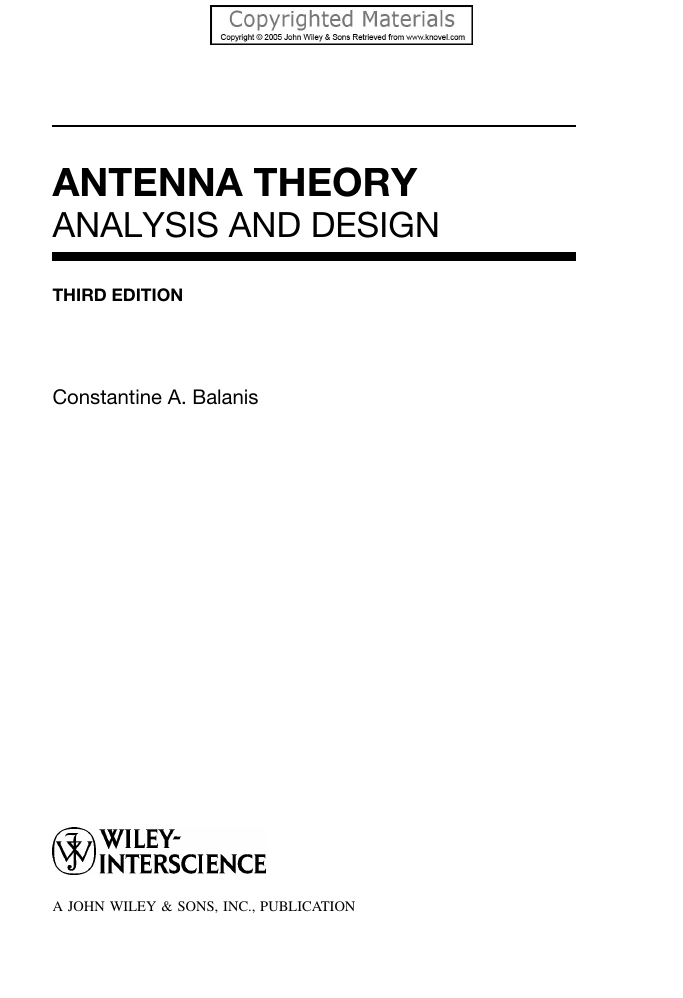
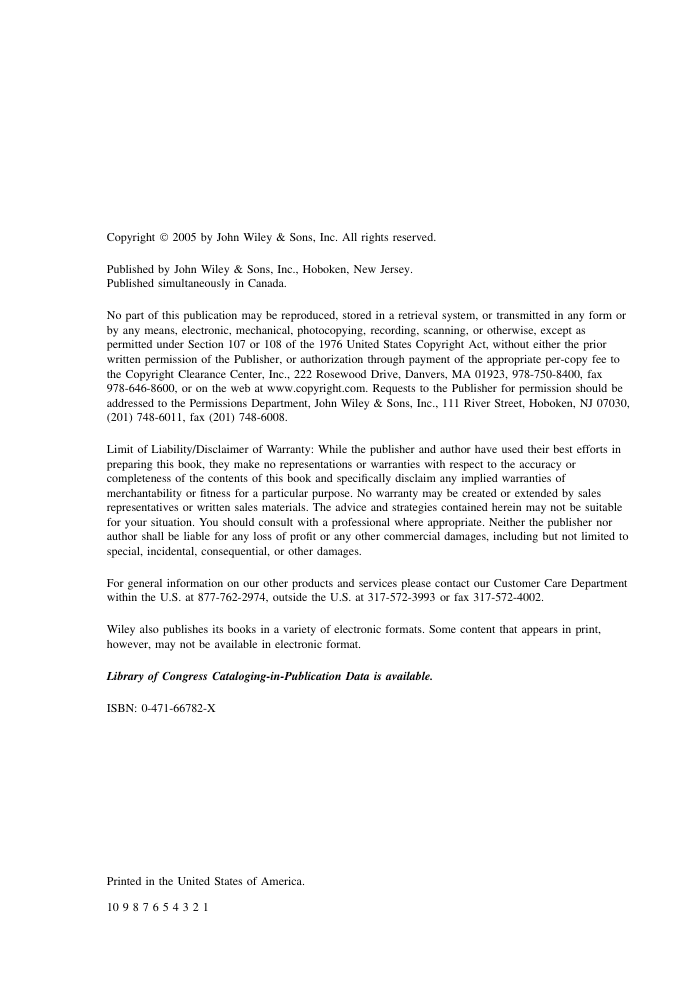
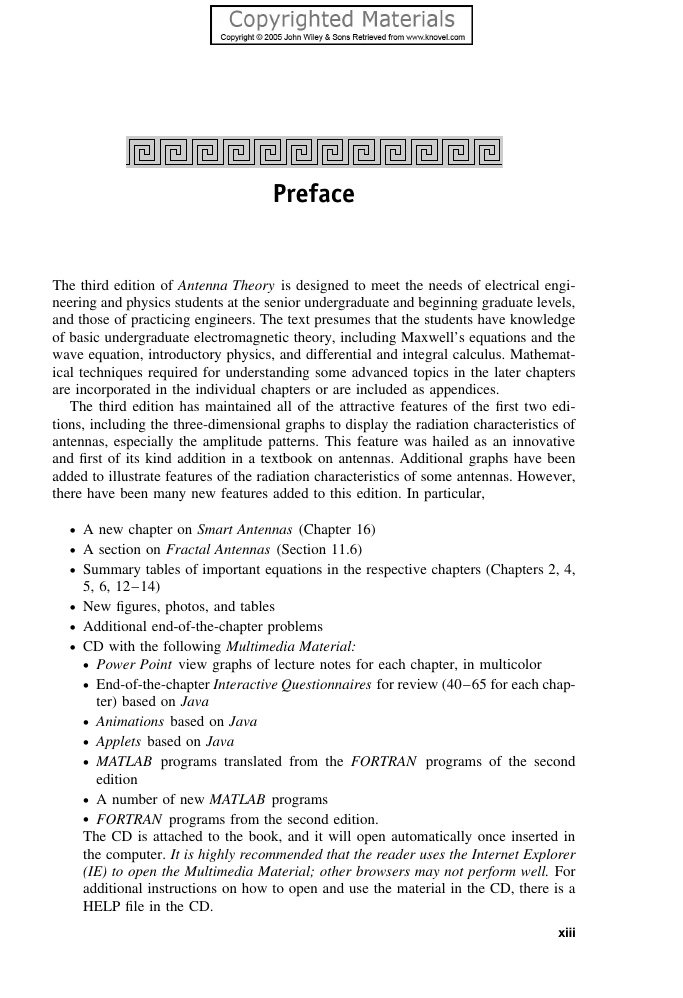
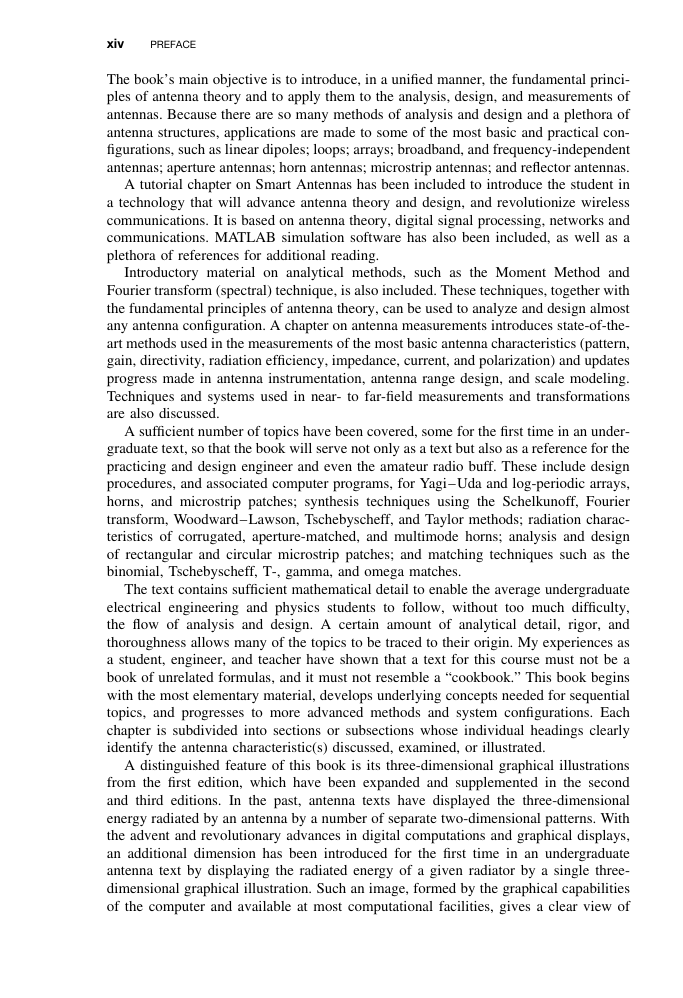
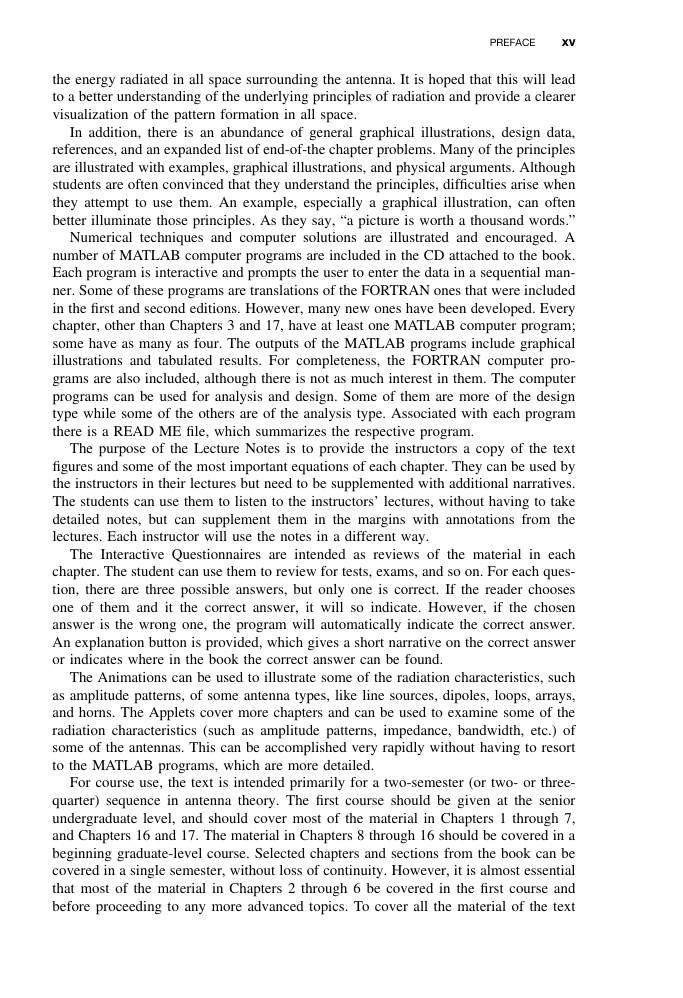
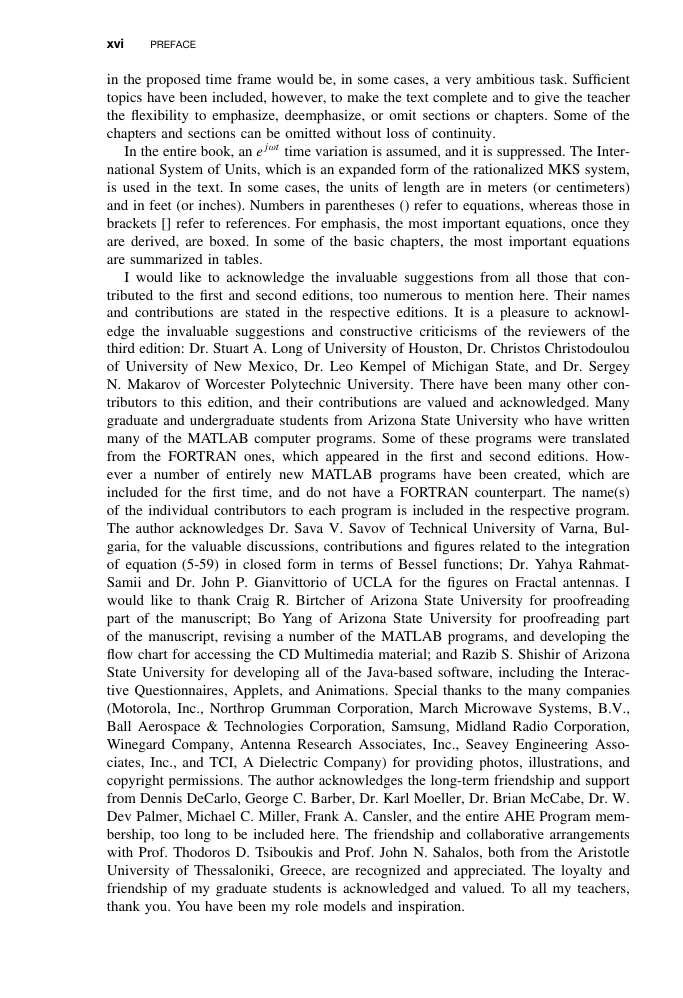
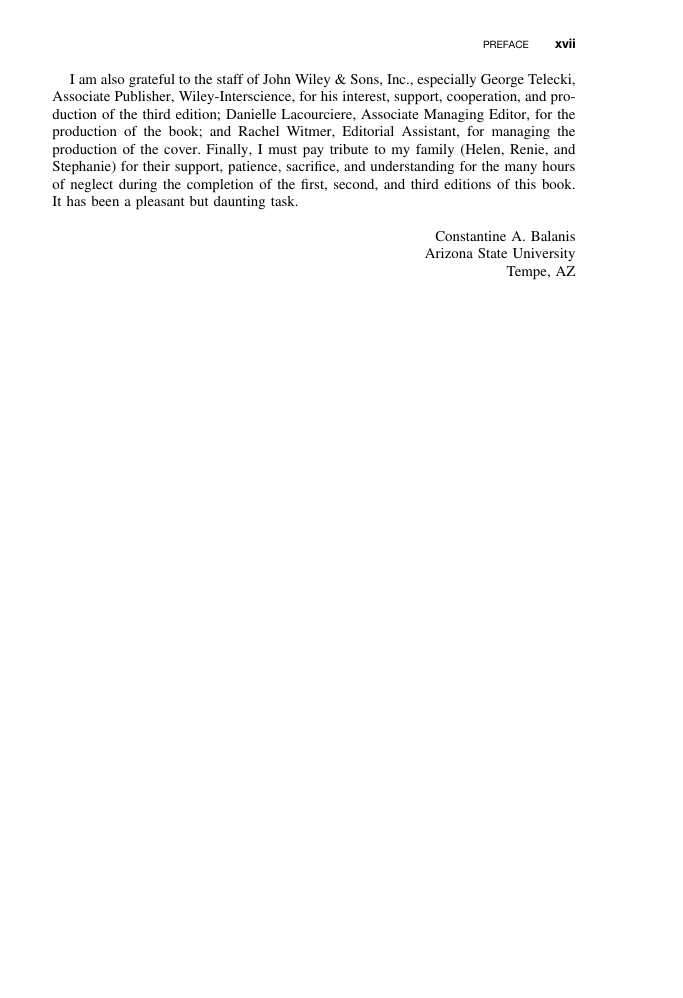
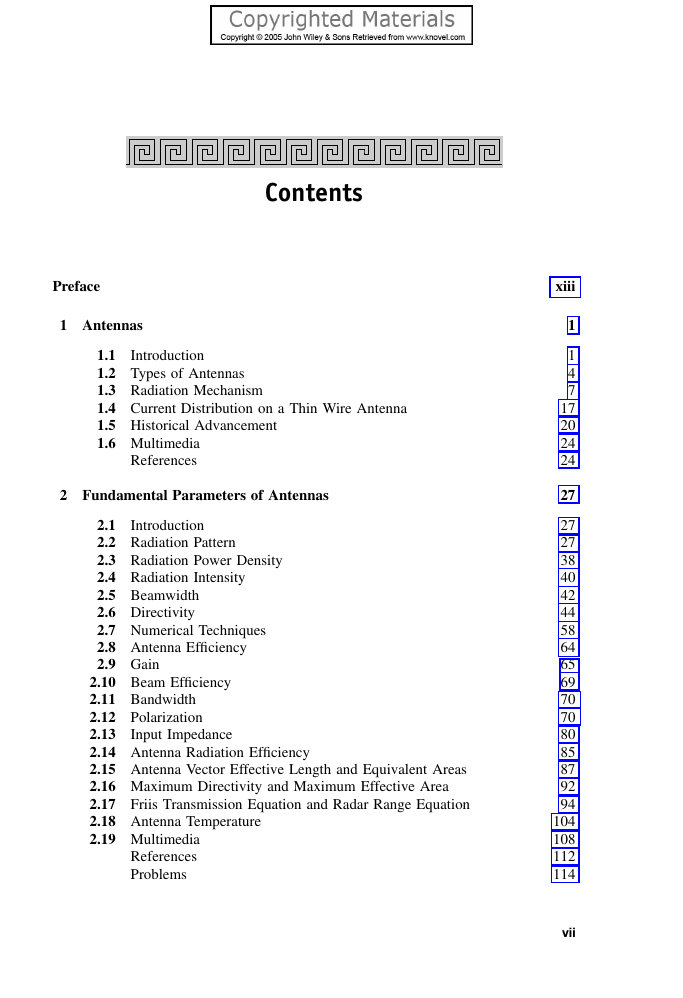








 2023年江西萍乡中考道德与法治真题及答案.doc
2023年江西萍乡中考道德与法治真题及答案.doc 2012年重庆南川中考生物真题及答案.doc
2012年重庆南川中考生物真题及答案.doc 2013年江西师范大学地理学综合及文艺理论基础考研真题.doc
2013年江西师范大学地理学综合及文艺理论基础考研真题.doc 2020年四川甘孜小升初语文真题及答案I卷.doc
2020年四川甘孜小升初语文真题及答案I卷.doc 2020年注册岩土工程师专业基础考试真题及答案.doc
2020年注册岩土工程师专业基础考试真题及答案.doc 2023-2024学年福建省厦门市九年级上学期数学月考试题及答案.doc
2023-2024学年福建省厦门市九年级上学期数学月考试题及答案.doc 2021-2022学年辽宁省沈阳市大东区九年级上学期语文期末试题及答案.doc
2021-2022学年辽宁省沈阳市大东区九年级上学期语文期末试题及答案.doc 2022-2023学年北京东城区初三第一学期物理期末试卷及答案.doc
2022-2023学年北京东城区初三第一学期物理期末试卷及答案.doc 2018上半年江西教师资格初中地理学科知识与教学能力真题及答案.doc
2018上半年江西教师资格初中地理学科知识与教学能力真题及答案.doc 2012年河北国家公务员申论考试真题及答案-省级.doc
2012年河北国家公务员申论考试真题及答案-省级.doc 2020-2021学年江苏省扬州市江都区邵樊片九年级上学期数学第一次质量检测试题及答案.doc
2020-2021学年江苏省扬州市江都区邵樊片九年级上学期数学第一次质量检测试题及答案.doc 2022下半年黑龙江教师资格证中学综合素质真题及答案.doc
2022下半年黑龙江教师资格证中学综合素质真题及答案.doc